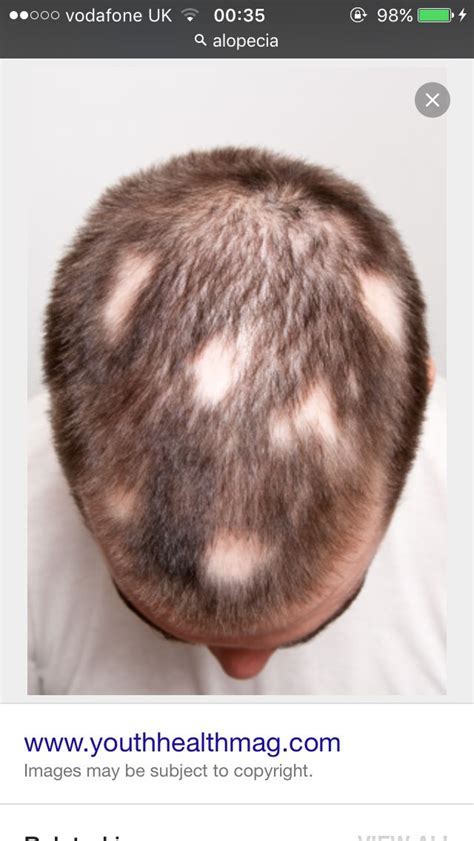What are Bald Head Patches?
Bald head patches, also known as alopecia areata, are areas of hair loss that can occur anywhere on the scalp. They are most commonly seen in men, but can also affect women and children. Bald head patches can be caused by a variety of factors, including genetics, autoimmune disorders, and certain medical conditions.

Symptoms of Bald Head Patches
The main symptom of bald head patches is the sudden appearance of one or more round or oval areas of hair loss. These patches can range in size from a few millimeters to several centimeters. The skin in the affected areas may be smooth or slightly raised, and it may be pink or white in color. Bald head patches can be itchy or painful, but they are not usually associated with any other symptoms.
Causes of Bald Head Patches
The exact cause of bald head patches is unknown, but it is thought to be related to an autoimmune disorder. In this condition, the body’s immune system attacks the hair follicles, causing them to stop producing hair. Bald head patches can also be caused by certain medical conditions, such as thyroid disease, lupus, and diabetes. In some cases, bald head patches can be a side effect of certain medications, such as chemotherapy drugs.
Risk Factors for Bald Head Patches
The following factors may increase the risk of developing bald head patches:
- Family history of bald head patches
- Autoimmune disorders
- Certain medical conditions
- Certain medications
- Stress
Diagnosis of Bald Head Patches
Bald head patches can usually be diagnosed based on a physical examination. Your doctor may also order blood tests to rule out any underlying medical conditions.
Treatment for Bald Head Patches
There is no cure for bald head patches, but there are a number of treatments that can help to slow down or stop hair loss. These treatments include:
- Topical medications, such as minoxidil and finasteride
- Oral medications, such as spironolactone and dutasteride
- Laser therapy
- Platelet-rich plasma therapy
- Surgery
Prognosis for Bald Head Patches
The prognosis for bald head patches is generally good. Most people with bald head patches will experience regrowth of hair within a few months or years. However, some people may experience permanent hair loss.
Complications of Bald Head Patches
Bald head patches can lead to a number of complications, including:
- Emotional distress
- Social isolation
- Difficulty finding work
- Reduced self-esteem
Prevention of Bald Head Patches
There is no way to prevent bald head patches. However, there are a number of things you can do to reduce your risk of developing this condition, including:
- Managing stress
- Eating a healthy diet
- Getting regular exercise
- Avoiding tobacco smoke
- Limiting alcohol intake
Conclusion
Bald head patches are a common condition that can affect people of all ages and genders. There is no cure for bald head patches, but there are a number of treatments that can help to slow down or stop hair loss. If you are experiencing bald head patches, talk to your doctor to learn more about your treatment options.
| Type of Bald Head Patch | Description |
|---|---|
| Alopecia areata | Round or oval areas of hair loss that can range in size from a few millimeters to several centimeters |
| Alopecia totalis | Complete loss of hair on the scalp |
| Alopecia universalis | Complete loss of hair on the scalp, eyebrows, and eyelashes |
| Diffuse alopecia | Gradual thinning of hair over the entire scalp |
| Androgenic alopecia | Gradual thinning of hair on the top of the scalp, which is most common in men |
| Traction alopecia | Hair loss caused by pulling or tension on the hair |
| Scarring alopecia | Hair loss caused by damage to the hair follicles |
| Postpartum alopecia | Hair loss that occurs after childbirth |
| Chemotherapy-induced alopecia | Hair loss that occurs as a side effect of chemotherapy drugs |
| Radiation-induced alopecia | Hair loss that occurs as a side effect of radiation therapy |
| Risk Factors for Bald Head Patches | Description |
|---|---|
| Family history of bald head patches | Having a close relative with bald head patches increases your risk of developing the condition |
| Autoimmune disorders | People with autoimmune disorders are more likely to develop bald head patches |
| Certain medical conditions | Certain medical conditions, such as thyroid disease, lupus, and diabetes, can increase the risk of developing bald head patches |
| Certain medications | Certain medications, such as chemotherapy drugs, can cause hair loss |
| Stress | Stress can trigger or worsen bald head patches |
| Treatment Options for Bald Head Patches | Description |
|---|---|
| Topical medications | Topical medications, such as minoxidil and finasteride, can help to slow down or stop hair loss |
| Oral medications | Oral medications, such as spironolactone and dutasteride, can help to slow down or stop hair loss |
| Laser therapy | Laser therapy can help to stimulate hair growth |
| Platelet-rich plasma therapy | Platelet-rich plasma therapy can help to promote hair growth |
| Surgery | Surgery can be used to transplant hair from other parts of the body to the scalp |
| Complications of Bald Head Patches | Description |
|---|---|
| Emotional distress | Bald head patches can cause emotional distress, such as anxiety, depression, and low self-esteem |
| Social isolation | Bald head patches can lead to social isolation, as people may avoid interacting with others out of fear of being teased or stigmatized |
| Difficulty finding work | Bald head patches can make it difficult to find work, as some employers may discriminate against people with visible hair loss |
| Reduced self-esteem | Bald head patches can lead to reduced self-esteem, as people may feel less attractive or confident |
